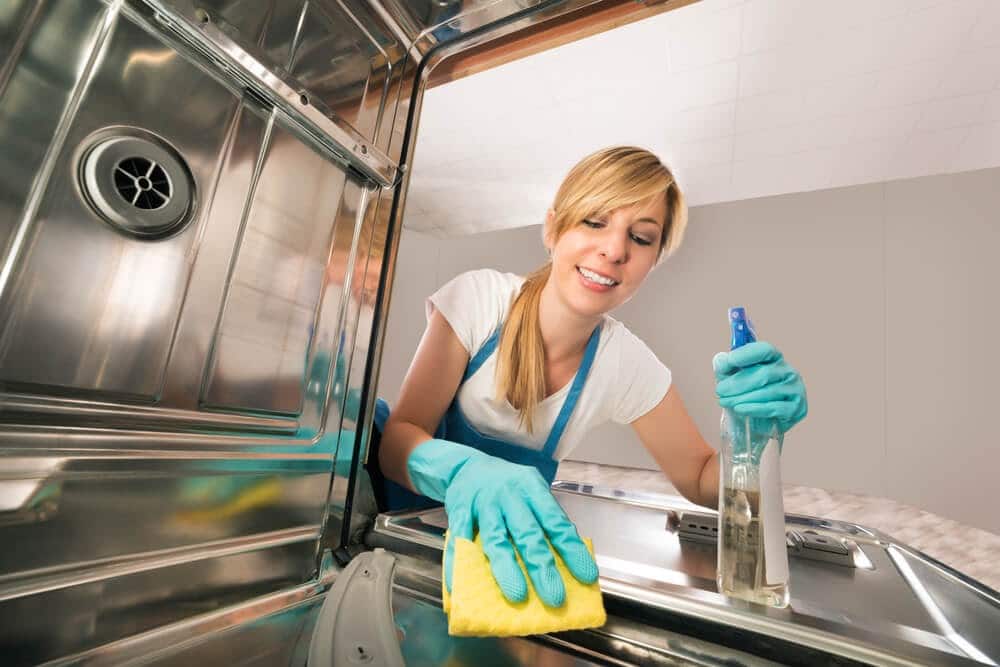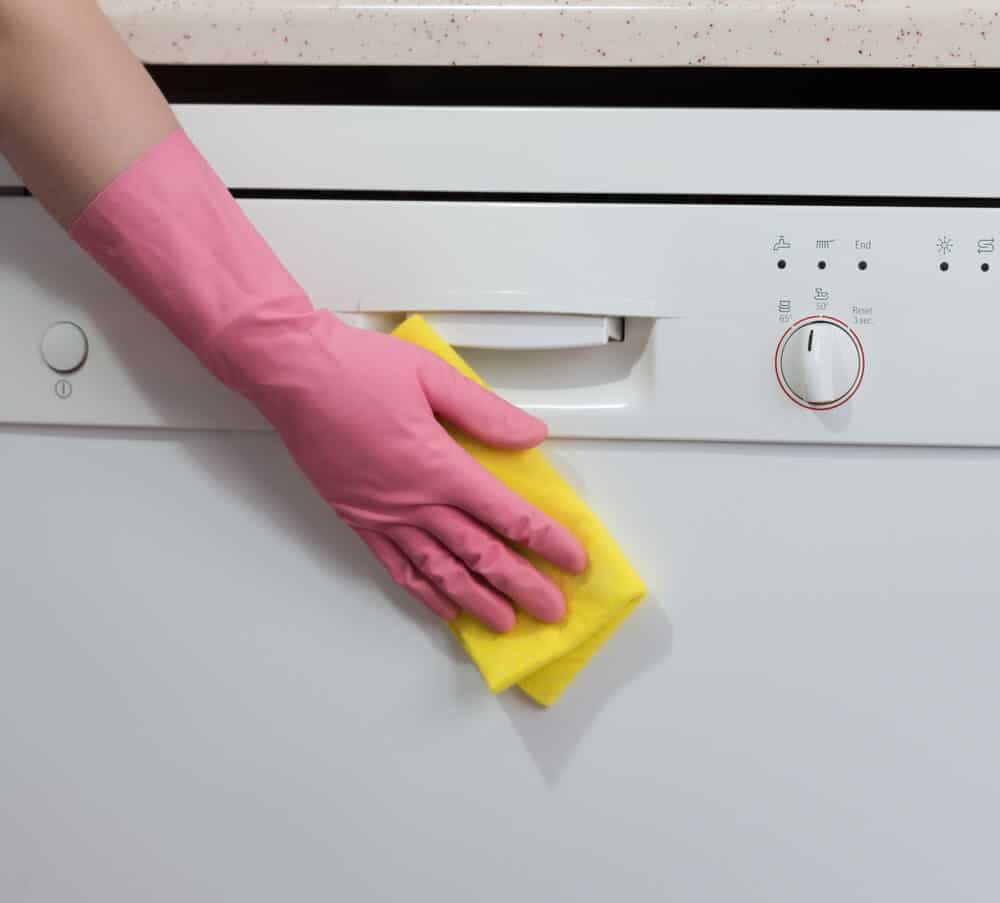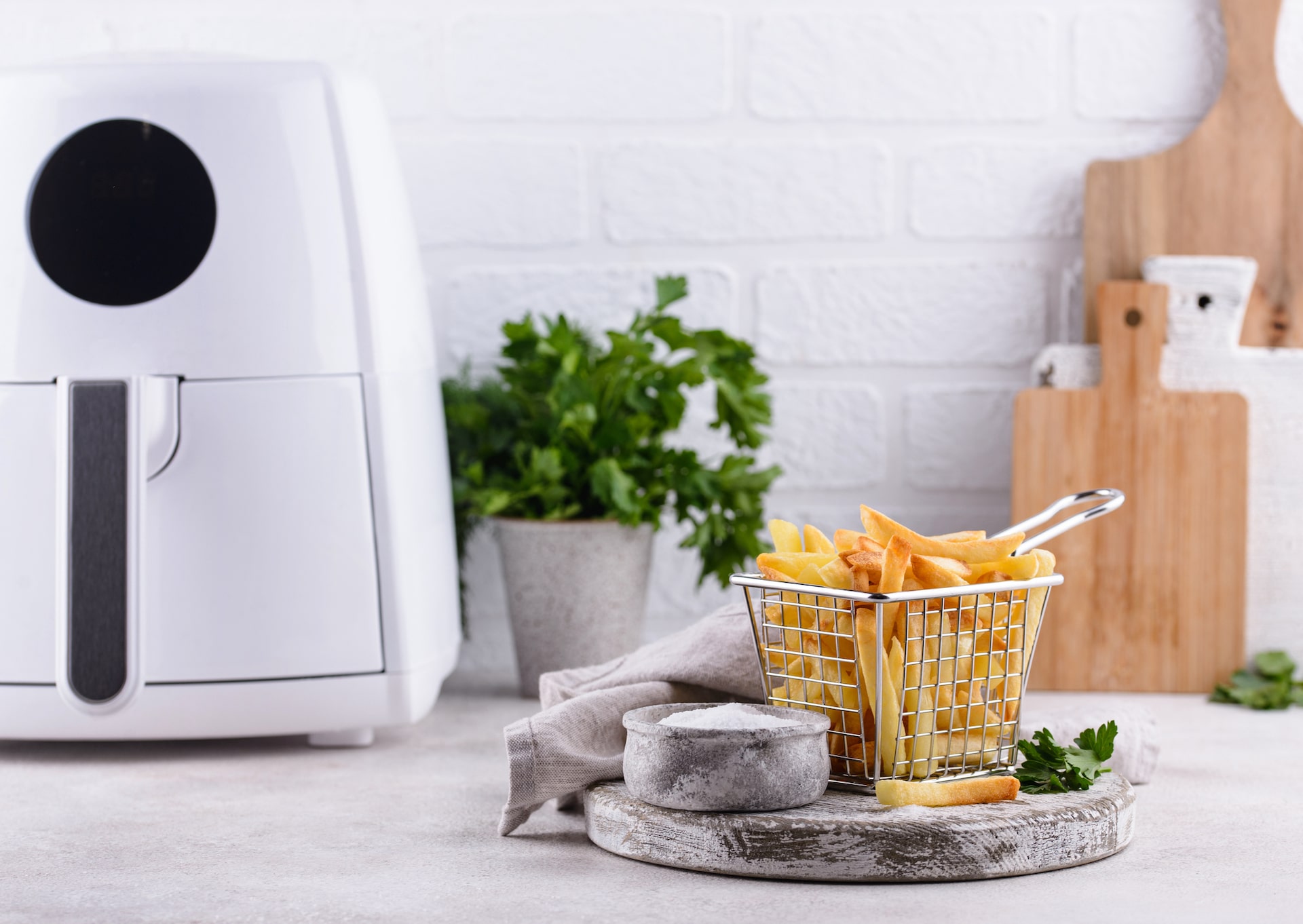This article may contain affiliate links. We may receive a commission for purchases made through these links. Privacy Policy.
There’s no question about it – dishwashers can get pretty nasty on the inside. And, like washing machines, sinks and tubs that you rely on to get things clean, dishwashers themselves also need to be cleaned. At least every once in a while …
Would you take a shower in a dirty tub? Would you throw your clothes into a dirty washing machine? Probably not.
If you’re not in the habit of cleaning the inside of your dishwasher, it’s time to make that a part of your cleaning routine. Ready to learn how?
Here’s how to clean a dirty dishwasher (inside and out).
Clean Out Food Particles

If your dishes aren’t rinsed before putting them in the dishwasher, you can expect some food particles and gunk to get trapped inside. The crevices around your filter, around your door and beneath your racks are like magnets for small bits of food.
To clean out food remnants that may be inside, pull out the bottom rack. Scoop out any visible bits of food that have collected on the bottom or gotten trapped around the door.
Things like pasta, rice, beans and corn kernels can easily get trapped in small spaces. So to prevent food buildup, rinse your plates before putting them inside, especially when you eat these foods.
Related: 13 Creative Kitchen Corner Storage Ideas
Clean the Dishwasher Filter
Every dishwasher has a filter in the bottom, and it needs to be clean in order to get your dishes clean.
Start by removing the filter and rinsing it under hot water. Use a toothbrush or a small scrub brush to scrub away any grease, grime or food that’s been trapped in the mesh filter.
Once it’s clean, lock in back into place inside your machine. It needs to be attached the right way before you load in dirty dishes and run a new cycle.
Clean the Inside Thoroughly

Dishwashers are prone to collecting mold and other types of dirt.
This is especially common around the door, the interior sides and the utensil baskets. To remove any visible signs of mold or dirt, wipe these areas down with a disinfectant cloth. Do this often and you can prevent mold and soap scum from forming again.
If your dishwasher needs a deep clean, there are a few easy DIY methods that you can try:
Two cups of distilled white vinegar can get the inside of your dishwasher sparkling clean! Just pour the two cups into a dishwasher safe bowl, place it on the top rack, and run a cycle on a hot setting. Do this WITHOUT putting any dishes or detergent inside.
Don’t have vinegar on hand? Baking soda works just as well. Sprinkle about one cup of baking soda along the bottom of the dishwasher and run a hot rinse cycle to see the best results.
Both vinegar and baking soda have the ability to break up grease and grime, remove odors, and make the inside of your dishwasher sparkling clean. Just be aware that vinegar, if used too frequently, may cause more harm than good.
With a pH level of about 2.5, white distilled vinegar is more acidic than you may think. Using it too often can actually cause the hoses and rubber gaskets in your dishwasher to break down.
Toss in a Cleaning Tablet
There are a variety of brands on the market that make cleaning products specifically for dishwashers. You can find them in tablet form and as pods, crystals, and liquids. Regardless of the type, they are an incredibly effective way to get the entire inside of your machine clean.
Most tablets and crystals need to be placed on the bottom of your dishwasher and then run on a normal wash cycle.
Most liquid cleaners require that you place the bottle upside down in your silverware basket and run your machine on a heavy-duty, hot-water cycle.
Before using a liquid dishwasher cleaner or tablet, make sure you read the instructions. Some are safe to use while running a load of dirty dishes. Others require that you run them on their own cycle without any dishes inside.
Brands like Cascade, Finish, Lemi Shine and affresh all make effective dishwasher cleaners. Not only will they get your dishwasher looking good, but they’ll also get it smelling fresh and functioning at optimal levels.
Related: How to Wash Shoes Without Ruining Them [Clean Your Kicks]
Wipe It Down on a Regular Basis

The outside of your dishwasher can get just as dirty as the inside. Like all appliances, you should use a disinfectant wipe to clean the handles, door and control panels regularly. If you have a stainless steel dishwasher, wipe with a rag and mild dish soap.
On surfaces that are touched frequently, this is the most effective way to stop the spread of germs among members of your household.
You probably already know this and do this – but there’s one way to take this cleaning routine one step further.
The next time you wipe down the outside, open up the dishwasher door and wipe along the top ledge of the inside of the door as well. This is a prime location for mold and dirt to collect.
And remember, it’s not just about making your dishwasher look and smell better. Your dishwasher will actually function better if you can keep problem areas on the inside as clean as the outside.
What Are the Best Ways to Clean a Dishwasher?
From scrubbing filters to washing with vinegar or cleaning tablets, there are a variety of ways to get a dishwasher clean.
The trick is to make it a part of your kitchen cleaning habit. Instead of loading the dishes, tossing in a pod and hitting the start button, take some time to give your dishwasher a good deep cleaning. And you don’t have to do it every day or even every week. Once a month is a good rule of thumb to prevent future clogs, mildew and musty odors.
A clean dishwasher without food, grease, mold and grime on the inside will function better, last longer, and get your dishes as clean as can be.
You might also be interested in: How Often Should You Replace Your Kitchen Appliances?
Jessica Heston
view postJessica Heston
After 15 years in the fashion industry, this Philadelphia native ditched her corporate career to focus on writing full time. Jessica is a TV junkie, whiskey lover and true crime addict. She finds inspiration from Broadway musicals, Hitchcock films and The Beatles. She is happily married without children, which she credits as the reason for her professional success, youthful attitude and solid eight hours of sleep every night.
view post





